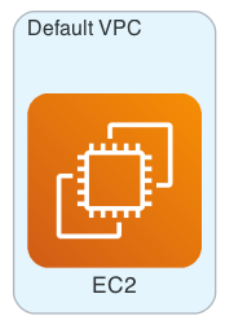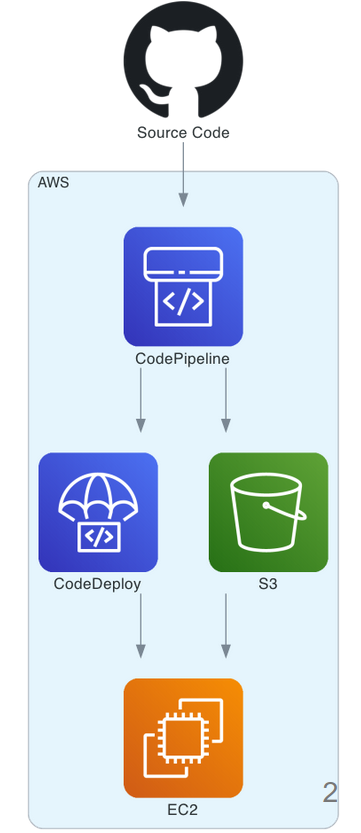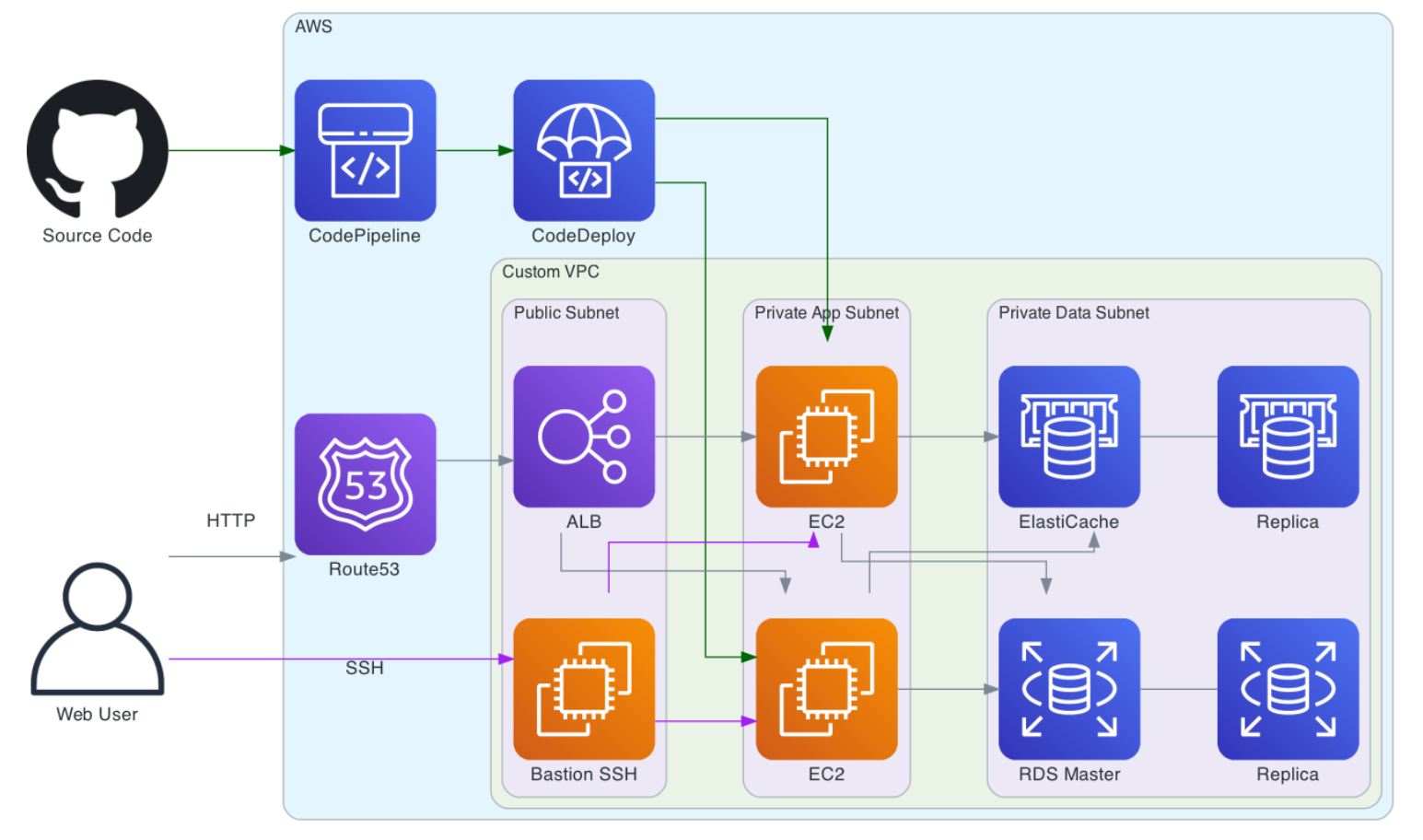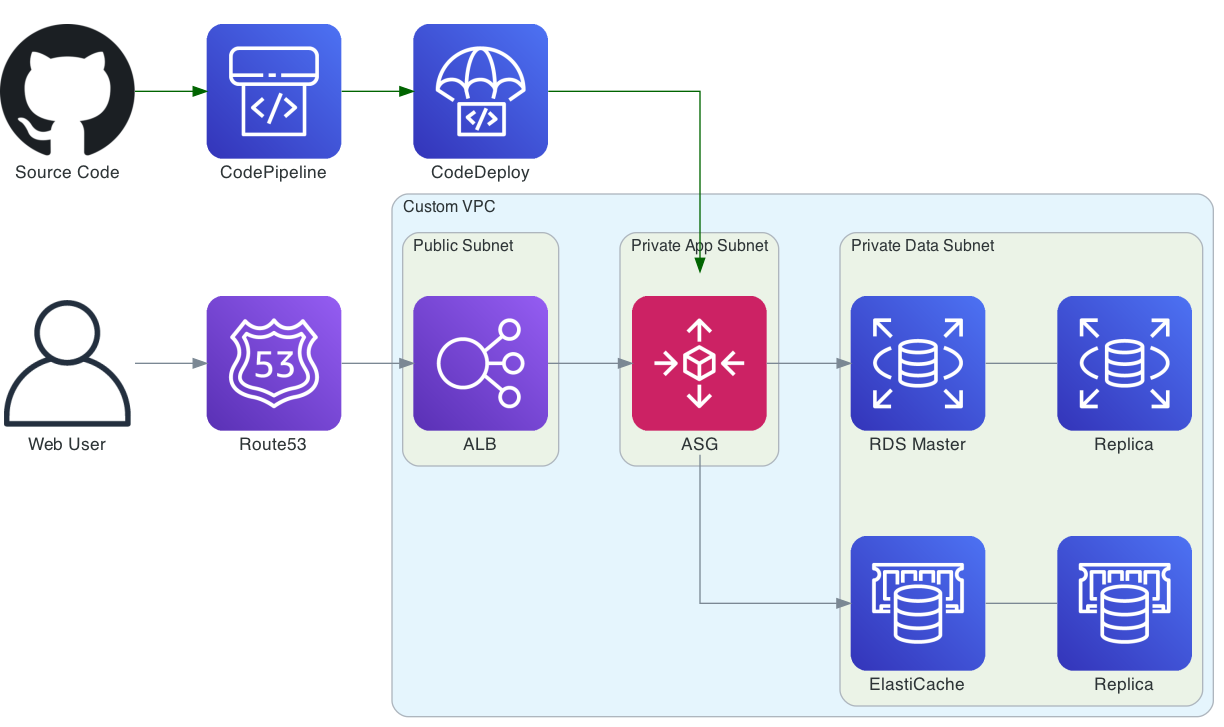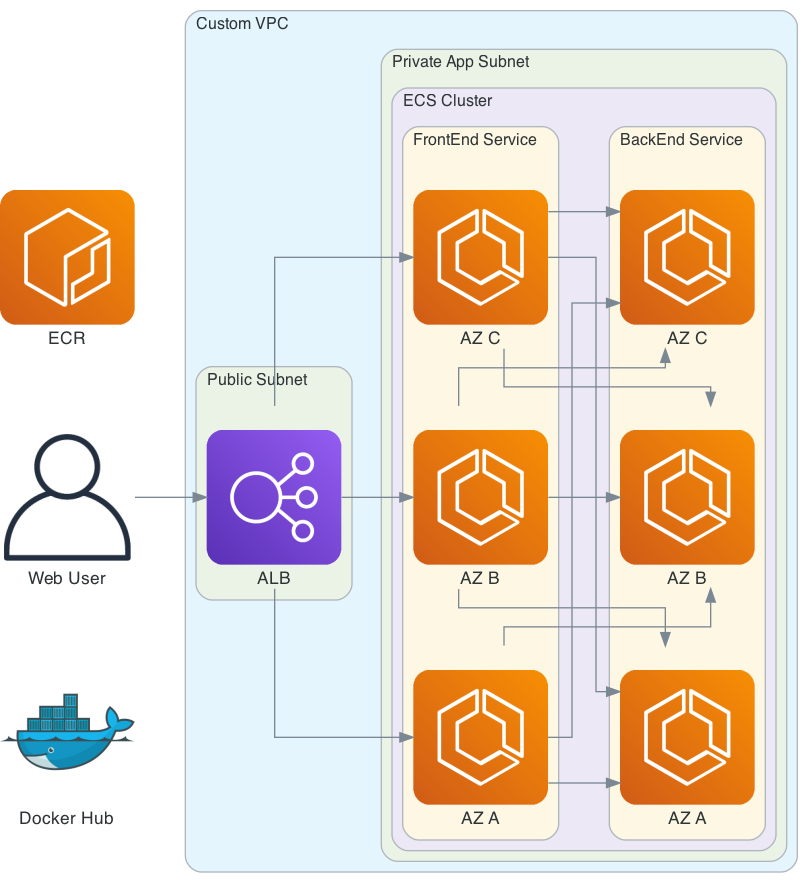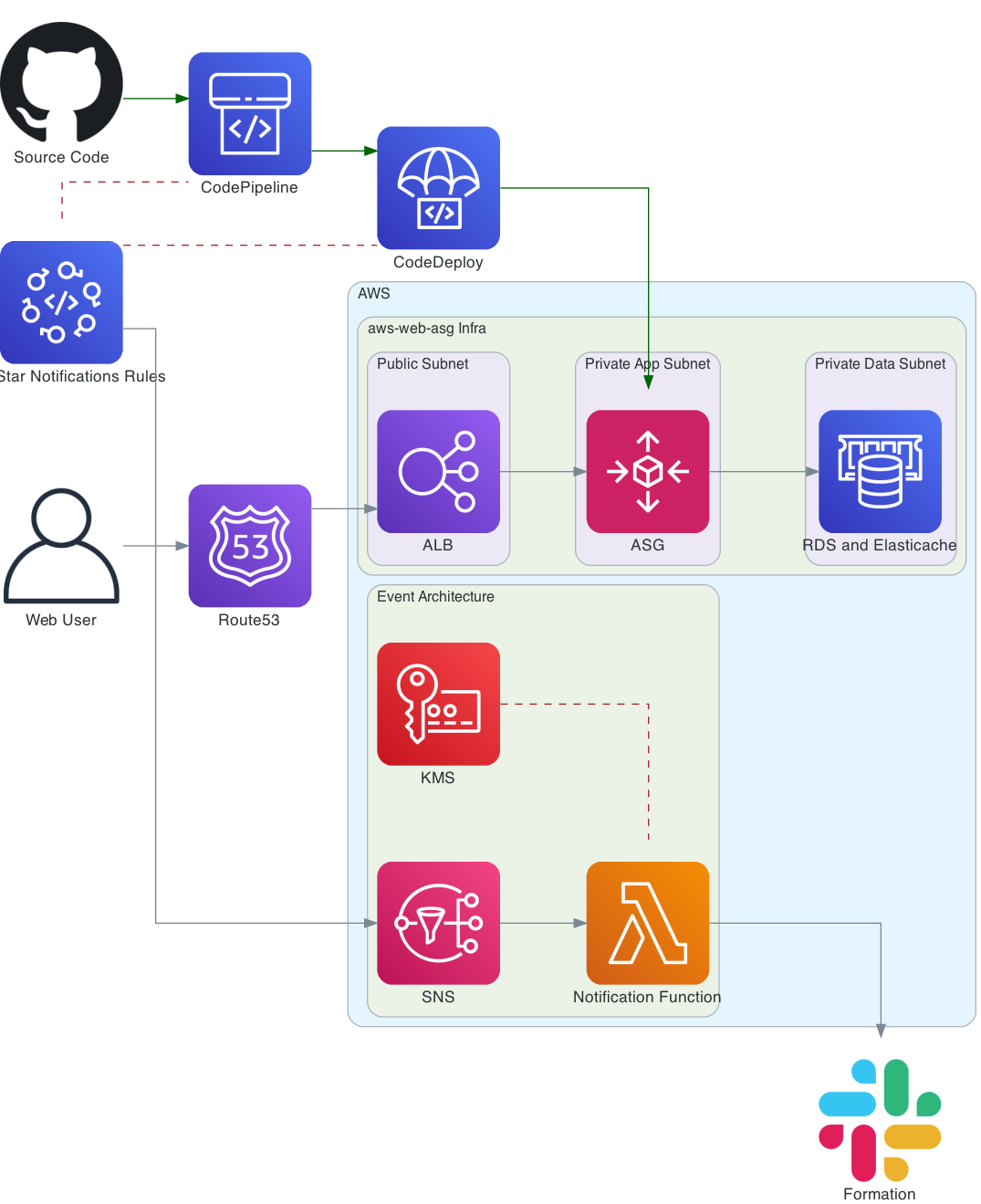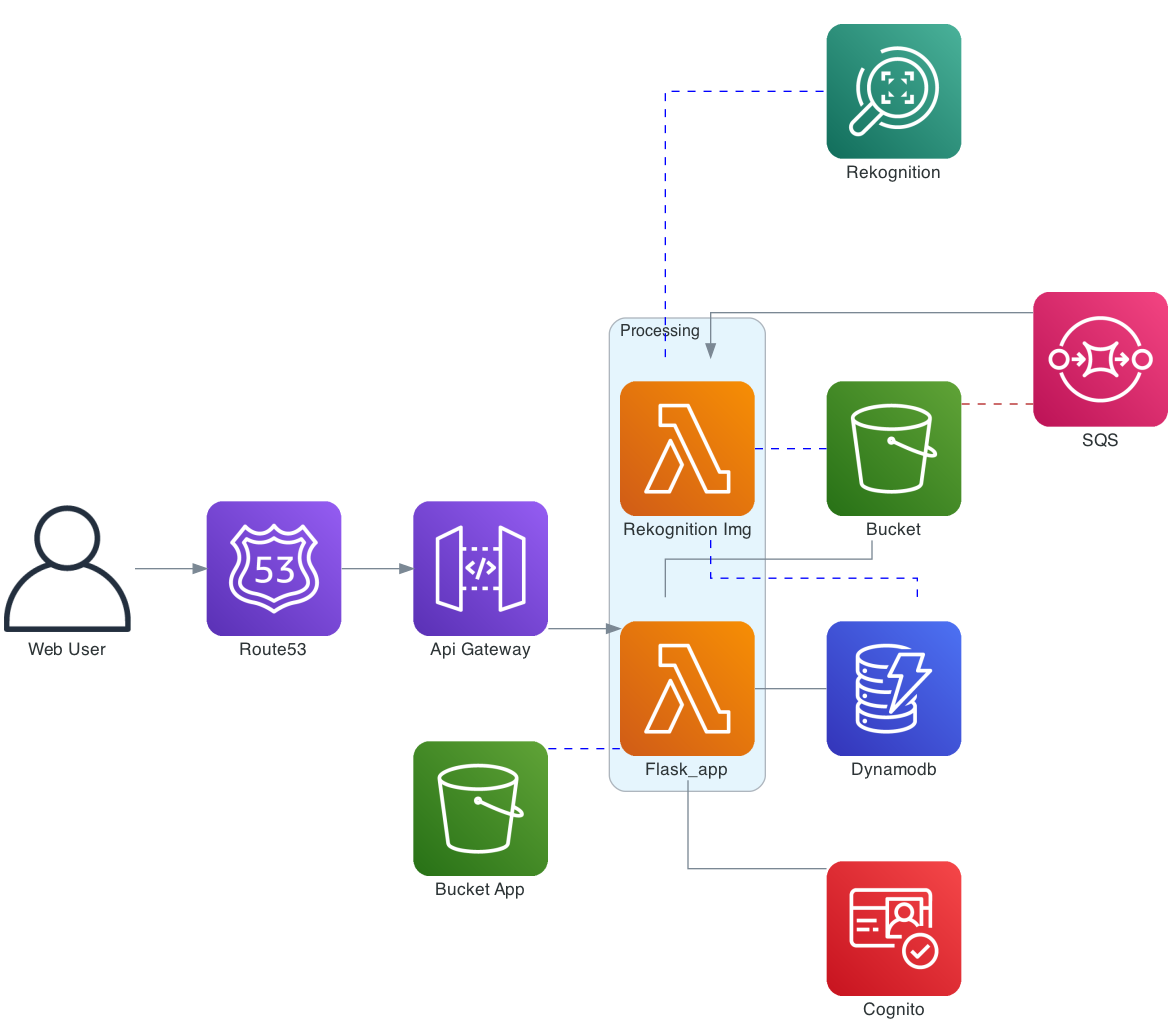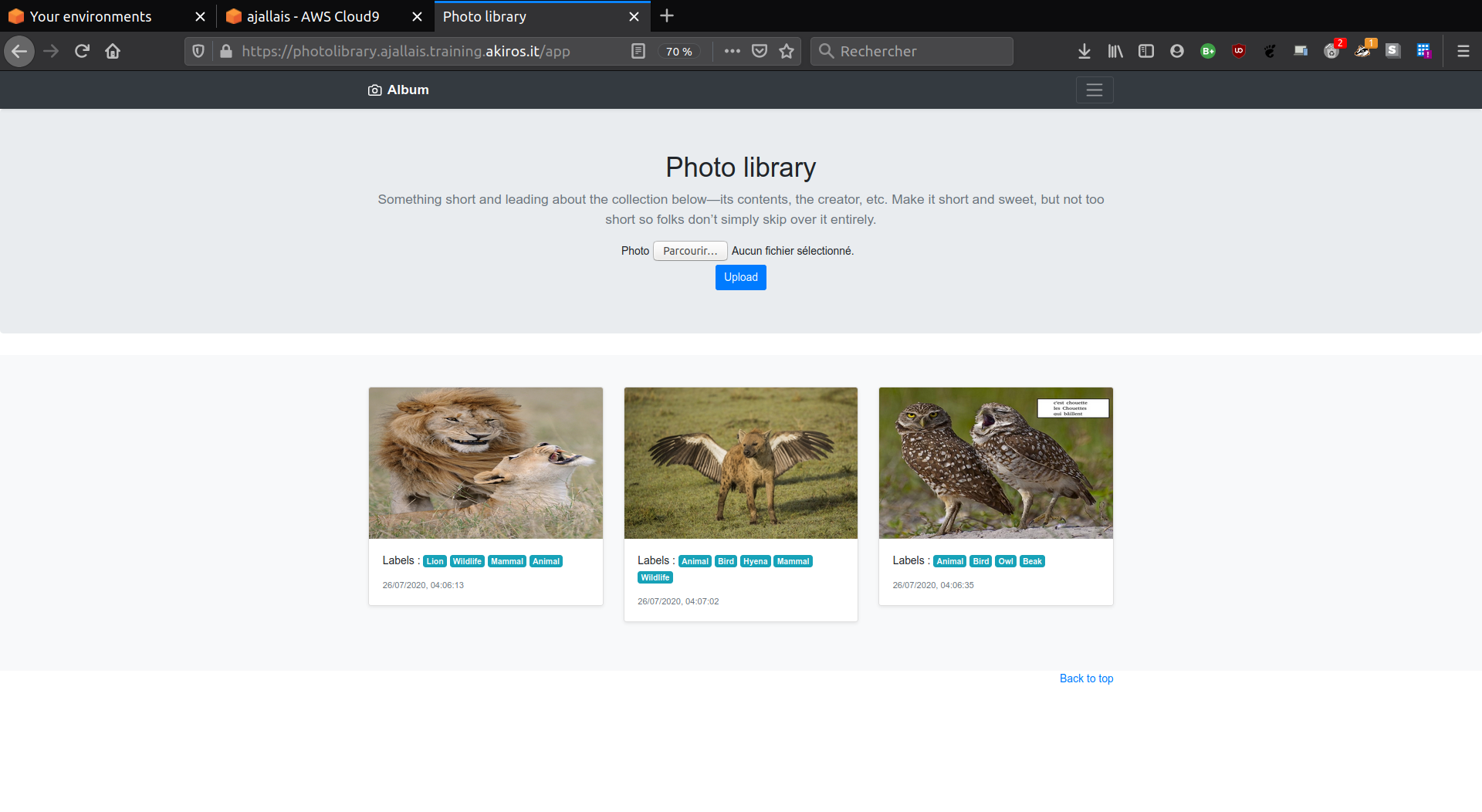Content of pratical lessons introducing AWS cloud computing deployed with Terraform. Works realized in the AWS formation kindly offered by AkirosIT, CloudInit and Mangrove (link to the certification).
- Infrastructure as Code
- AWS Fundamentals
- Deployment and continuous integration
- 3-tier Web Architecture
- Resilient and Secure Architecture
- Elastic Architecture
- Containers and microservices architecture
- Event-Driven Architecture
- Serverless Architecture
Introduction to , infrastructure as a code.
Creation of a minimalist architecture to deploy a blog in the Stockholm region. The architecture will be as the following :
Deployment of a web architecture to run a WordPress blog, of which the deployment of the new code will be automated. The architecture will be as the following :
Creation of a web architecture to deploy a WordPress blog composed of an EC2 instance to run our web server, an RDS instance for database, an ElastiCache node for temporary storage. The architecture will be as the following :
In this tutorial a highly available and secure web architecture will be created.
The network brick will be composed of :
- a VPC and an Internet Gateway
- a group of public subnets distributed over 2 availability zones:
- the resources that will be deployed there will be publicly accessible.
- a group of Private App subnets distributed over 2 availability zones:
- The resources deployed in this group will not be publicly accessible.
- This group will be reserved for resources of the "Application" layer.
- a group of Private Data subnets on 2 availability zones.
- the resources that will be deployed there will not be publicly accessible.
- This group will be reserved for "Data" layer resources.
-
- a NAT Gateway that will allow the resources in the private networks to communicate outside the VPC.
The architecture will be composed of the following resources:
- a Load Balancer in the Public subnet group.
- An EC2 instance in each subnet of the Private App group to run our web server.
- a multi-zone RDS instance in the Private Data subnet group for the database.
- one ElastiCache node in each subnet of the Private Data group for the cache.
The application will be managed and deployed by CodePipeline and CodeDeploy.
In this lab, a highly available, secure and elastic web architecture will be created. It will be composed of the following resources:
- a load balancer (LoadBalancer) in the Public subnet group.
- an autoscaling group that will launch EC2 instances in the Private App subnet group to run our web server.
- a multi-zone RDS instance in the Private Data subnet group for the database.
- one ElastiCache node in each subnet of the Private Data group for the cache.
The application will be managed and deployed by CodePipeline and CodeDeploy.
In this tutorial, a micro-services architecture will be created, it will be composed of :
- a Load Balancer
- an ECS cluster
- 2 applications (Frontend and Backend)
In this tutorial, we will add to our aws-web-asg architecture a notification system with our chat tool (slack). This will allow us to be notified quickly when an automated action is executed.
This integration requires :
- Deploy AWS Sns (Simple Notification Service)
- Deploy a Lamba function to format and send our notifications
- Deploy AWS KMS services to encrypt and secure sensitive information
In this lab, an architecture for a photo application with automatic analysis will be created.
This architecture will use only AWS hosted services without servers (100% serverless).
The architecture of our application will be composed of the following resources:
Lambdainstances to run the application code- A
Rekognitionimage analysis service - A queuing service
SQS. - A
DynamoDBdatabase service - A
Cognitoauthentication service
See below, an example of usage :
